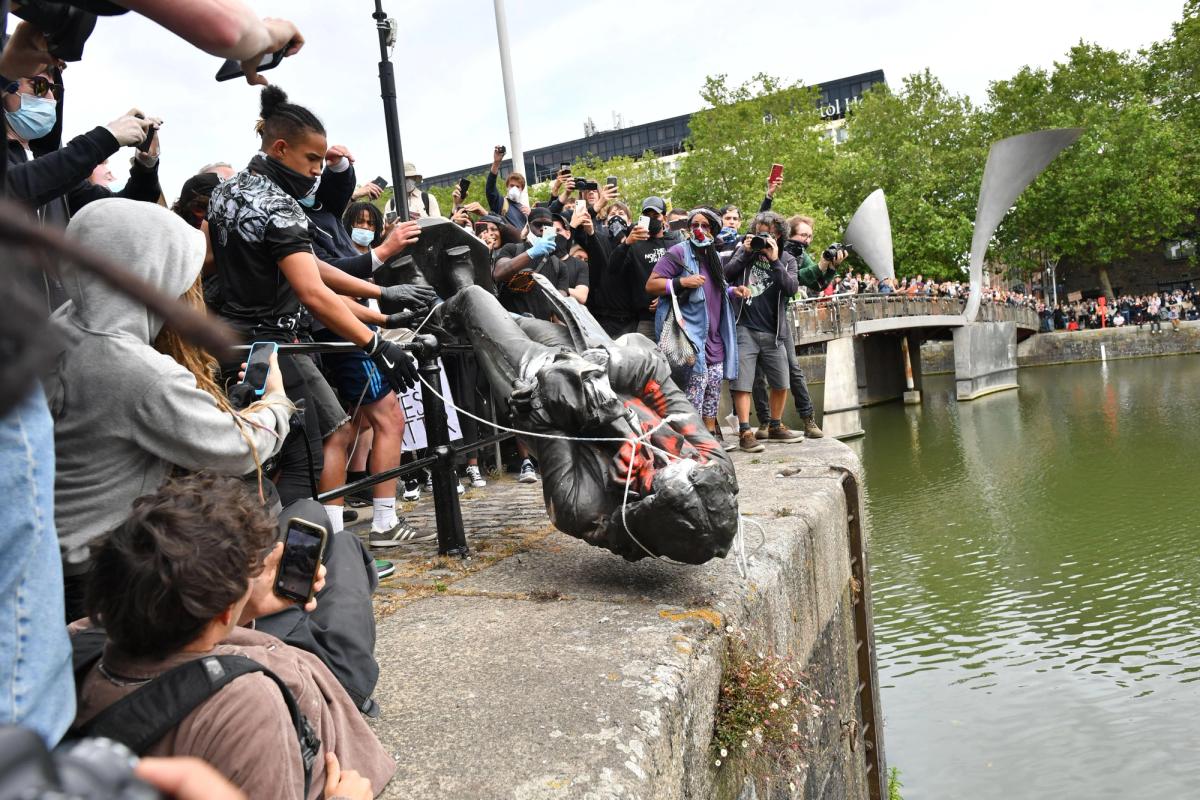More than two years after the Conservative government announced a strategy to “retain and explain” controversial monuments and historic statues, the UK culture sector is still waiting to see whether this policy will be implemented, and questioning its relevance.
“My concern is that the original premise of the policy is hugely political, designed to stoke these rather silly and imported culture wars that the Tories are completely obsessed with,” Ed Vaizey, a former Conservative arts minister, tells The Art Newspaper.
According to the website for the Department for Culture, Media and Sport (DCMS), a seven-member heritage board was tasked with overseeing “the development and drafting of a new set of guidelines on how difficult heritage assets should be dealt with, which will be underpinned by research”.
Although the board was established in May 2021, a DCMS spokesperson will only confirm that the guidelines will be published “in due course” and declined to comment on whether the recommendations would be available before the next general election, expected in 2024.
Former Culture Secretary Oliver Dowden wrote at the time: “Last week a new heritage advisory board met for the first time to draw up new guidelines for heritage organisations on how this should be done. Its members include the Museum of the Home’s Dr Samir Shah, Trevor Phillips, former director of the Equality and Human Rights Commission, historian Robert Tombs and Dr Anna Keay, director of the Landmark Trust."
Speaking to The Art Newspaper, the UK sculptor Nick Hornby explains he feels artists should be represented in this group. He says: “While the advisory board showcases diversity in terms of cultural backgrounds the omission of artists and designers raises concerns. I would argue that these skills are indispensable when drafting guidelines that outline the impact and function of visual culture within our public spaces.”
“Retain and explain” was first mooted by the then communities secretary Robert Jenrick in January 2021 when the government proposed “new laws to protect England’s cultural and historic heritage”. The move came amid a growing culture war in the UK following the removal of the statue of slave trader Edward Colston in Bristol by protesters in June 2020, and other contentious statuary.
Dowden held a summit in February 2021 telling national museum heads and leaders from the National Trust, Historic England, the National Lottery Heritage Fund and Arts Council England how to implement the government’s “retain and explain” approach.
The following May, under the headline, “We won’t allow Britain’s history to be cancelled”, Dowden announced in the Sunday Telegraph that a new heritage board had been formed to discuss how heritage organisations could put “retain and explain” into practice.
The Art Newspaper understands that DCMS-sponsored museums will not have to adhere to the guidelines when they are eventually published. “This only applies to statues, plaques and monuments,” says a source close to government. Meanwhile, we asked a number of key sector organisations to outline and define the “difficult heritage assets” in their collections and portfolios.
A National Trust spokesperson says: “The vast majority of the National Trust’s collections are on display, usually in the unique settings for which they were made or acquired and therefore the circumstances are often different from those of museums. We have our own interpreting history policy position which ensures we take a research-based approach as relevant to each place or object on a case-by-case basis.” Historic Royal Palaces and Historic England declined to comment.
Vaizey adds: “There is certainly a lot to be said for giving museums and local authorities… guidance on how to deal with issues that arise around difficult heritage assets… [but] I also worry that this could set a principle of government interference in these matters. Having said that, [the] government sponsors the reviewing committee on the export of works of art and the spoliation committee, and I would be in favour of a restitution committee. So as long as the government allows the committee to work independently, my worst fears may not be realised.”
In 2021, two trustees embroiled in rows over the UK government’s interference in public bodies told The Art Newspaper about their fears for the culture sector as ministers were accused of flushing out museum board members who hold dissenting views.
The term “retain and explain” meanwhile still provokes meanwhile. Hornby adds: “The wording raises several concerns for me. It fails to acknowledge that visual culture transcends easy explanation; it lies in interpretation rather than didactic explanation. The language is dogmatic, when the guidance needs to be open to both conservation as well as radical reimagining. Simply put, in certain instances, removal could indeed emerge as the more viable solution.”
The Public Statues and Sculpture Association also feels the arguments have moved on over the past three years and says that the emphasis should be on “explaining and maintaining” instead. “There should be continual discussion, contextualisation and education surrounding these works,” say co-chairs Holly Trusted and Joanna Barnes.


